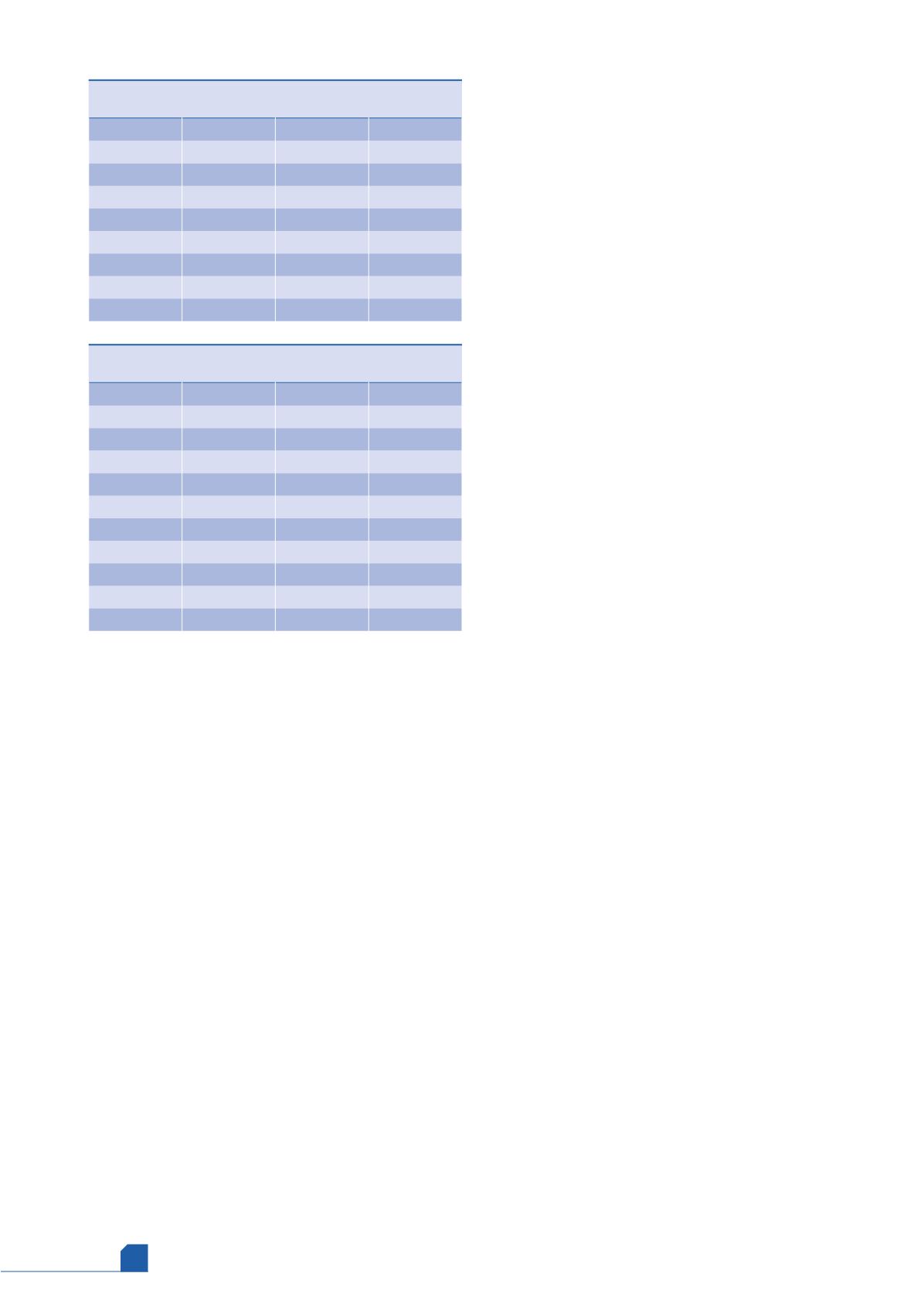
July
2020
HYDROCARBON
ENGINEERING
14
peak in the second quarter, with a gradual return to normality in
the second half of 2020.
In stark contrast to the ADB, the IMF along with many
private economists are nervously referencing the Great
Depression in their analyses.
As most of developing Asia has yet to see a peak in
COVID-19’s spread, it is the ADB that may have to soon
downgrade its forecast for Southeast Asia’s economies.
With the Brent crude price plunging from an average
US$66/bbl in 2019 to under US$20/bbl in late April, the region’s
energy producers Brunei, Indonesia, Malaysia and Vietnam could
have their oil and gas export earnings slashed by as much as 70%
this year. The US benchmark crude, West Texas Intermediate
(WTI), fell to a new record low of minus US$40/bbl on 20 April.
For net energy importers Cambodia, Laos, Myanmar,
Singapore, Philippines and Thailand, the benefit of cheaper oil
and gas will be offset by the shock of sharply weaker exports
and lower economic growth.
Southeast Asia’s fuels trade deficit to
continue
Southeast Asia’s fuels trade will likely remain in deficit in the
coming years as the region’s energy demand continues to grow
while its domestic oil reserves decline.
For 2018, the latest data available, the World Bank found
that eight of the region’s ten countries spent a total of
US$213.3 billion on fuel imports while earning US$155.9 billion in
exports. Their combined net position was a loss of
US$57.4 billion.
The World Bank did not include Laos and Vietnam as their
data was not available for 2018.
Only three of the region’s economies registered a surplus in
their fuels trade that year, thanks to the Brent crude price
averaging US$71/bbl, the highest since 2014.
Indonesia had the largest fuels trade surplus of
US$10.4 billion in 2018, which could be the peak given the sharp
drop in energy prices since then. At the same time, the country’s
oil consumption grew 5.2% year-on-year to 1.785 million bpd in
2018 while its proved oil reserves stagnated at 3.2 billion bbl,
according to BP.
The fuel trade surpluses of Malaysia and Brunei are also set
to decline as the two countries are expanding their downstream
plants, which will raise their domestic consumption of crude
and oil products. Malaysia’s oil consumption grew 2.6%
year-on-year to 814 000 bpd in 2018 while its oil reserves
remained at 3 billion bbl.
Brunei’s new refinery-petrochemical complex, which started
up in late 2019, is expected to operate at capacity from the
second half of 2020.
Majority owned by China’s Hengyi Petrochemical Co. Ltd,
the complex comprises an 8 million t (or 160 000 bpd) refinery
that will produce fuel and refined products mostly for export to
neighbouring countries. It also supplies feedstock directly into
the integrated petrochemicals plant, which has the capacity to
produce 1.5 million tpy of paraxylene and 500 000 tpy of
benzene for export to China.
Singapore registered the region’s biggest net fuel trade
deficit of US$33.9 billion as it diverted more of its crude intake
and refined products output for domestic consumption.
Refining margins to “remain depressed”
Southeast Asia’s fast-growing downstream oil sector will face
another difficult year given the continuing uncertainty over the
COVID-19 pandemic and the worsening state of US-China ties.
US ratings agency Moody’s set the tone at the start of 2020
with a bearish outlook on Asia’s downstream refining and
petrochemicals business. That outlook is likely to be further
downgraded.
Referencing the refining margins out of Singapore, the
industry’s benchmark for the region, Moody’s said it expected
continued weakness in the sector in Asia.
Refining margins and petrochemical spreads would “remain
depressed in 2020”, it predicted.
From an average US$6/bbl in 2017 and 2018, Moody’s said
Asia’s refining margins slumped to US$3.70/bbl in 2019, even
turning negative in December. This trend will likely continue
amid the weakening demand for fuels in Asia for the rest of
2020.
“The economic slowdown in the region that contributes to
the low spreads is unlikely to reverse sharply during 2020,” it said.
Philippines’ oil industry headed for
sharp downturn
The Philippines’ oil industry is bracing for its worst year in over a
decade as the nation’s fuels consumption is expected to plunge
in line with global trends.
As an early warning sign, Luzon Island, home to half the
country’s population of 110 million, reported an immediate 30%
collapse in electricity consumption following a region-wide
lockdown on 15 March to combat the spread of COVID-19.
Luzon, on which the capital city of Manila is located, is also the
country’s main economic engine.
Table 1.
Southeast Asia’s fuels trade, US$ billion,
2019 (source: World Bank)
Export
Import
Balance
Brunei
6.0
0.3
5.7
Indonesia
42.0
31.6
10.4
Malaysia
38.5
33.6
4.9
Myanmar
3.6
4.0
-0.4
Philippines
1.1
13.9
-12.8
Singapore
54.0
87.9
-33.9
Thailand
10.7
42.0
-31.3
Total
155.9
213.3
-57.4
Table 2.
ADB forecast for Southeast Asia’s GDP
growth, %
2019
2020
2021
Brunei
3.9
2.0
3.0
Cambodia
7.1
2.3
5.7
Indonesia
5.0
2.5
5.0
Laos
5.0
3.5
6.0
Malaysia
4.3
0.5
5.5
Myanmar
6.8
4.2
6.8
Philippines
5.9
2.0
6.5
Singapore
0.7
0.2
2.0
Thailand
2.4
-4.8
2.5
Vietnam 7.0
4.8
6.8








